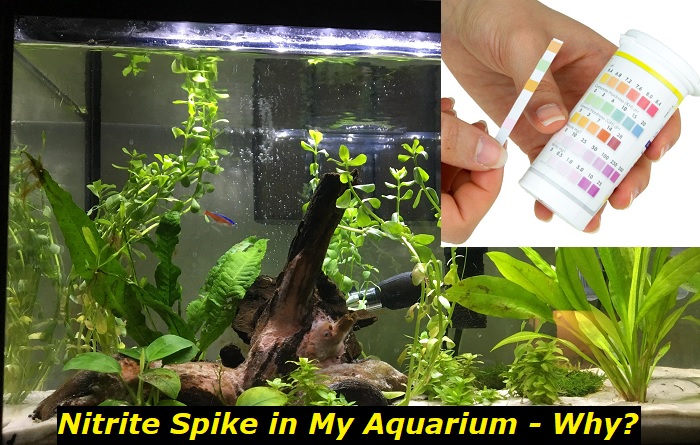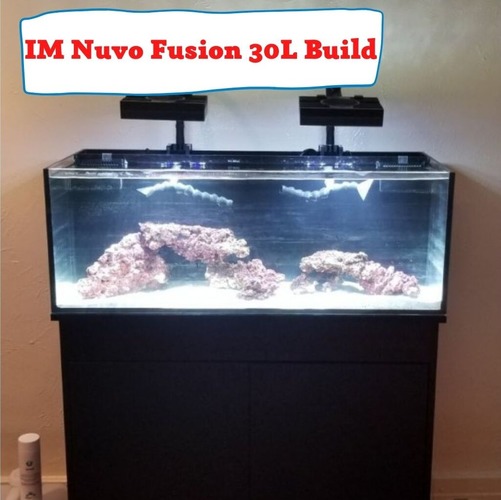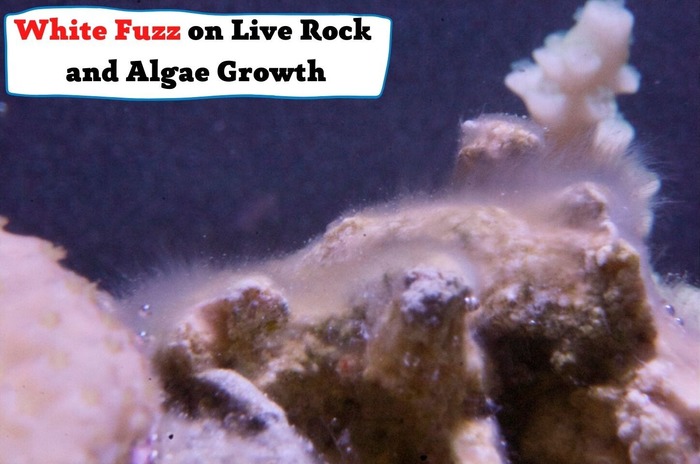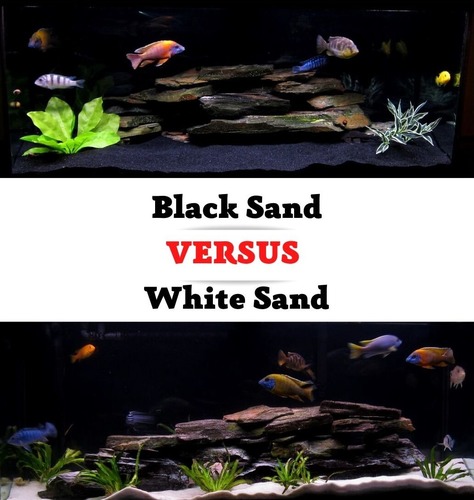A nitrate spike in the aquarium is not friendly to fish. Some fish die as early as 24 hours after exposure to high nitrate levels. This can be problematic, especially if you are new to fish keeping.
Perhaps you are wondering why your aquarium has a nitrate spike and what you can do to arrest the situation.
Here is the article that gives insight into the causes of nitrate spikes, the signs of a spike, and what you can do to save your pet and your aquarium.

Understanding Nitrates
Nitrate (NO3) is a type of salt that contains polyatomic ions. Nitrates do not dissolve easily in water, but some others are soluble in water, e.g., Bismuth Oxynitrate. These chemical compounds are essential in fertilizer production and certain types of bombs.
The odorless and tasteless nature of nitrates in freshwater can build up to a high level unnoticed. When this occurs, it is termed a ‘nitrate spike.’ In the aquarium, a nitrate spike could be the beginning of mayhem if not properly managed.
How Does Nitrate Get into the Aquarium?
You aren’t making bombs or fertilizers in your aquarium, so how does nitrate get inside – you might be wondering.
Uneaten food and the excreta of your pet decompose to form ammonia. Other substances in your fish tank, such as leaves, decompose to form ammonia.
Since ammonia is toxic, the bacteria filtering the aquarium water Nitrosomonas converts it to nitrite, which is less toxic but is almost as harmful as ammonia.
With the presence of nitrite, another type of bacteria in the water called Nitrobacta gets to work. They convert the nitrite to nitrate, which marks the end of the nitrogen cycle. So, there you have it – nitrate in the aquarium!
Although it is tolerable at low levels, getting rid of it becomes essential for your pet’s safety when there is a high level of nitrate in your aquarium.
How Much Nitrate Is Too Much in the Aquarium?
Fish poop and uneaten food will continue to exist in the aquarium. The amount of this waste per tank can be reduced but not eliminated. This means that ammonia will be formed from decomposing waste, and the nitrogen cycle will continue until nitrate is formed.
This means that nitrate is present in almost every aquarium. But a high level of it is what you do not want. This level varies depending on the aquarium type, and the kind of fish kept.
Nitrate levels between 5-10 ppm and below are permissible for freshwater aquariums. Some other fish can tolerate nitrate levels of up to 20 ppm. But generally, nitrate levels above 20 ppm can be toxic to fish.
Also, fry does well at nitrate levels under 5 ppm. At this level, the water remains fresh and free of algae.
If you keep a reef aquarium, you want to keep the nitrate level as close to zero as possible.
Why Do Nitrate Spikes Occur in the Aquarium?
Several factors contribute to the sudden spike in the nitrate levels of an aquarium. They are as follows:
1) Overfeeding
When you overfeed fish in your tank, the result is an increase in waste production and uneaten leftovers in the water. Both leftovers and excreta aid the development of nitrate as they decompose.
So, with constant overfeeding comes an increase in the nitrate levels, which can result in a nitrate spike in the aquarium.
2) Poor Cleaning of the Tank Filter Media
The culprit for the nitrate spike in the aquarium can be a clogged filter media. When gunk fills up this space, nitrate ions build up, which can cause your smooth-running aquarium to take a nosedive.
Regular cleaning of your tank’s filter media with water free of chlorine is recommended.
3) Unutilized Organic Particles
Decorating your aquarium with leaves, tree branches, plants, etc., to give your pet a natural experience, like water bodies in the wild, is good.
However, your decorations might hurt your pet by raising the nitrate levels of the tank. Dead organic materials like plants decompose to form ammonia – the by-product of which is nitrate.
Therefore, too many unutilized organic products in the aquarium can lead to a spike in nitrate levels.
4) Overpopulation
The fish population in a tank can be the reason for the nitrate spike in the aquarium. With too many fish producing waste that decomposes to form ammonia, whose by-product is nitrate, a sudden spike in the nitrate level will occur.
5) Tank Size
A nitrate spike is more likely to occur in smaller tanks quicker than in bigger tanks, especially when the tank is heavily planted and heavily populated but not appropriately filtered.
A little fish poop and some leftovers in a small tank will likely ruin the water quality in no time. This means that the Nitrosomonas and Nitrobactas will work much more quickly in this tank. The result will naturally be the accumulation of nitrate, which is harmful to your pet.
6) Poor Water Changes the Routine
When the aquarium water is changed regularly, the chances for nitrate accumulation are significantly reduced. The best solution to pollution is dilution.
When the water containing poop and leftovers is replaced with clean water, the water parameters will be reset, and any chances of a nitrate spike will be avoided.
7) Poor Tank Cleaning Routine
A poorly cleaned tank can lead to nitrate spikes in your aquarium. When the tank is overcome by unutilized organic materials, dead plants, waste products, etc., the nitrogen cycle will kick start and speed up its process.
The result would be a sudden jump in nitrate levels. You can usually tell this from the algae bloom in the tank.
8) Wrong Water Supply
You might be doing everything right and still experience a spike in the nitrogen levels of your aquarium. The reason could be the source of the water supply. Tap water that is contaminated with fertilizer runoff and waste rich in nitrate.
The water facilities exert energy in purifying the water before supplying it. However, some nitrate still escapes the filtration process. So, a sudden increase in nitrate levels can occur when you run your aquarium with this type of water.
Nitrate Spike Signs
Nitrate is odorless and colorless, so the indicators of a nitrate spike in the aquarium are as follows:
- Algae bloom.
- The fish spend a longer time on the surface.
- The heavy breathing of fish.
- The vigorous movement of the gills.
- Loss of appetite.
- Acting dazed
What To Do About Nitrate Spikes?
You might want to change the entire aquarium water immediately to remove the nitrate, but that would be a bad move. You will introduce your fish to a rapid environmental change, which can lead to extreme stress levels and even death.
To save your pet, you need to gradually lower the nitrate level, just like it increased gradually. The following are ways to handle a nitrate spike in your aquarium.
1) Change the Water Gradually
The water in the tank should be changed gradually and not at once. About 5 to 10 percent of the water should be changed hourly to reduce the nitrate level. This means that for every hour, about 5 to 10 percent of the nitrate content of the aquarium is removed.
This method is temporal.
2) Add Floating Aquatic Plants
Floating plants survive on water and will absorb nitrate from your aquarium. Plants need nitrate, but you do not want too much algae in your tank, which can also become problematic.
This method reduces the possibility of having dead plants whose by-product of decomposition increases the nitrate level.
Floating plants grow fast and require CO2 and nitrate for survival. Some of them are Amazon frogbit, Hornwort, Water sprite, and Water spangles. You can be sure that they will keep the nitrate levels at bay.
3) Use Reverse Osmosis Water
Reverse osmosis (RO) purified water is safer and free of nitrate, unlike tap water which is treated at the water facilities. So, switching to this type of water can reduce the nitrate levels of your aquarium.
4) Set Up a Refugium with Lava Rock
Setting up a refugium with lava rock – a small tank with algae that connects to your main fish tank via a tube, and the water is circulated in both tanks. This reduces the nitrate level as algae thrive on nitrate.
5) Reduce Feeding
Reduce feeding to once daily to reduce leftovers in the tank and waste production. You also want to feed only what your fish can eat in a minute or two.
6) Pay Attention to the Tank Population
Too much population means too much poop, leading to high nitrate levels. Paying close attention to the population of each tank in your aquarium will reduce the chances of having a nitrate spike.
Bottom Line
A nitrate spike in the aquarium is very harmful to your pet. Why this occurs could be a result of overfeeding, overpopulation, etc.
If you suspect a nitrate spike in your aquarium, use a combination of the suggestions listed above. You might also want to consider the service of a commercial nitrate remover to keep the nitrate level of your aquarium considerably.
- Snail Mantle Collapse – Here’s What Every Pet Owner Should Know - April 2, 2023
- Algaefix Killed My Fish – What Have I Done Wrong? - March 2, 2023
- How Long Can Live Rock Be Out of Water? And What Will Happen Then? - February 2, 2023




